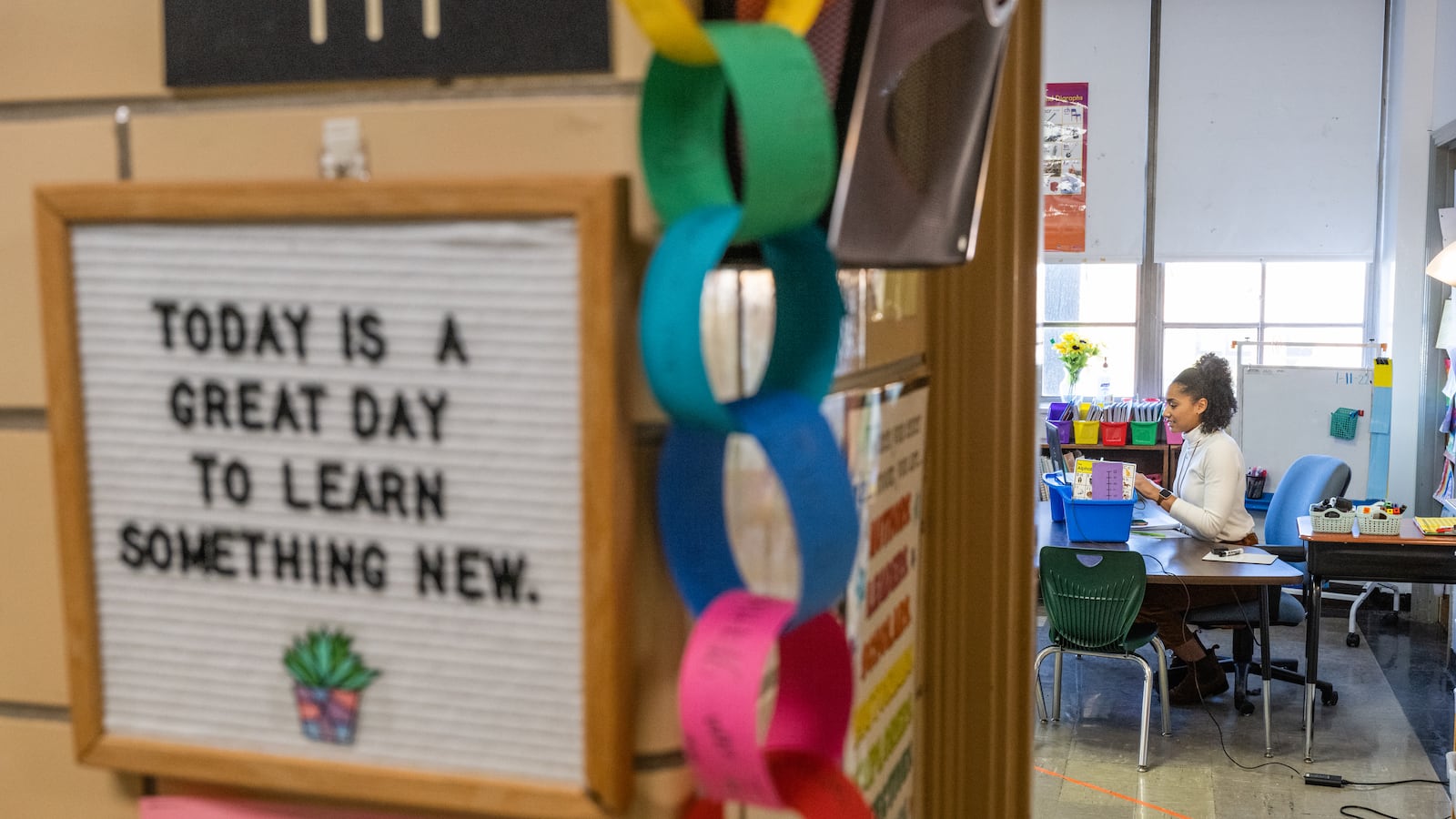“He bought a bowling alley?” I asked Teresa, the human resources director at Highline Academy, our two-campus charter school in Denver. We were in the midst of summer teacher training, and school hadn’t started yet.
“I guess it was his big dream, the thing he always wanted to do,” she answered.
“OK, but you don’t buy a bowling alley just out of the blue. He must have been planning for this. Why did he sign a contract with us? Why did he start summer training?” She had no answers other than it had something to do with the pandemic.

It used to be rare for more than one or two teachers to quit during a school year. Teachers leaving mid-year because they were having a baby used to be the one exception; everyone else would stick it out for the school year at least. They did it for the students they had relationships with and because it could damage their reputation for another education job in the future. That standard has been shifting over the past 10 years, as competition for teachers in a time of shortage has intensified. But this school year, teacher turnover has been extreme.
By the time our doors opened in August of 2021 and students were back, some for the first time since March 2020, three teachers had already quit. During remote learning at our school (serving students in early childhood through eighth grade), everyone had been frozen in place, hunkered down for the duration. Even though it was hard to be teaching online, and then in person with COVID restrictions, we were all trying to figure out these new ways to do school. Over the summer, many people across fields pondered their life goals and reconsidered their priorities (see: The Great Resignation). Teachers were no different. Some moved to live closer to family, some pursued online teaching positions, and others left teaching altogether. But that was only the first wave.
Last school year, our in-person students were spaced far apart, each at a desk in its own masking taped box to keep six feet of distance between them. Each child had a small box of items meant only for them, no sharing, and they spent all day in the same group of 18 students never mixing with the other kids in their grade. One-third of our students were still only online, so our school building was smaller and quieter.
This school year, we were all still wearing masks and jumping on Zoom for adult meetings, but our kids were all in school and we didn’t have to keep them in small cohorts. They could play together, work in partners, and mix with students in other grades. It was clear that many of them had forgotten or never learned how to share, or how to function in a group instead of as an individual at home. It wasn’t a normal year, and it wasn’t an emergency anymore either.
In the early fall, there was a second wave of people leaving, but more teachers were also applying to work at our school. Some schools were offering large hiring bonuses or higher salaries with their extra federal funds. Teachers all over Denver seemed restless to find the right fit and sought out schools that were a better match for their own educational beliefs. As some teachers left us and new people came in, it exacerbated the discomfort, like we were all wearing new shoes that we could never quite break in.
Just keeping all the students safe was like solving a giant puzzle each morning with multiple pieces missing.
In November, there was a third wave of resignations.
“Almost all of the fourth grade team?” I was stunned. Two of our four fourth grade teachers had left, and the third was moving up to fifth to take over a class where another teacher had left.
“The kids are going to feel like it’s their fault,” the principal said, echoing exactly what I’d been thinking. We didn’t even post the jobs; we just looked internally and moved around some experienced teachers to fill the gaps and reassure these students. The intense needs of students with limited and disrupted school experiences and varying degrees of trauma from the last two years created classrooms the fourth grade teachers said felt like insurmountable challenges to them. They did not feel successful and no matter how we tried to support them it didn’t seem to help.
It has been really hard. Second graders need to learn kindergarten, first grade, and second grade academic and social skills. Sixth graders are grappling with fourth and fifth grade concepts while trying to master sixth grade. Every teacher has what feels like triple the workload within each child. For some people, teaching this year was just too hard and they left hurling hurtful words at colleagues and school leaders. The new applicants we had seen in September and October dwindled. Our vacancies went unfilled for months and the extra staff we had brought on so we could provide additional supports and interventions this year were drawn into covering homerooms and core content classes.
In January, we came back from winter break holding our breath, expecting additional departures. Instead, we got hit with omicron. Over the first few weeks, we had between seven and 14 staff members, well over 10% of our campus team, absent every day. Just keeping all the students safe was like solving a giant puzzle each morning with multiple pieces missing. Teachers covered for each other during their lunches and prep times. School principals, teaching assistants, and office staff stepped into classrooms and we kept our doors open. Students were safe and cared for even if learning wasn’t happening quite like it normally would. Omicron cases started to fall in mid-February, and we thought now we can settle into teaching again.
Then our district lifted all COVID restrictions all at once at the beginning of March. No more masks, in-person adult meetings were back on, kids can eat together in the cafeteria, musical performances and indoor sports games returned. Parents can volunteer in the school. All the safety precautions we’d been practicing for two years were ripped off like a band-aid. Some teachers were relieved to take off their masks, and others felt vulnerable without them and chose to keep wearing them.
Then a teaching assistant in the fourth grade that lost three teachers earlier in the year decided he had to quit. When he told the kids he was leaving, many of them started to cry. As adults, we have our own lives, our own reasons to do what we do. For the kids, it’s another grown-up leaving them. Teaching assistants are the ones finding an extra snack for a hungry student, helping to solve a problem between friends during recess, and providing support when a student is struggling with a new concept. Teaching assistants also make up the best candidate pool for new teachers. Yet they are disappearing like a puddle in the spring sun.
We have had 25 people leave since last August. That is over 16% of our staff. Students are still catching up and educators are still exhausted, but maybe, just maybe, we are starting to see the light. As I plan our budget for next year, I am adding in positions to provide small-group academic instruction for students, staff to support behavior needs, instructional coaches to support our teachers. I know these positions will better meet students’ needs, will make the teacher workload lighter, and help everyone to feel more supported. I am grateful for the additional federal dollars to fund these positions at least for one more year. But I wonder if we will be able to find enough people to take these jobs. And if we do, will they stay?
Christine Ferris is Executive Director of Highline Academy Charter Schools in Denver. She founded and led Our Community School, a K-8 charter school in Los Angeles from 2005 to 2013. Ferris has been a consultant for multiple charter schools in Denver, Los Angeles, and nationally.


